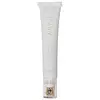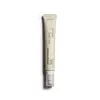What's inside
What's inside
 Key Ingredients
Key Ingredients

 Benefits
Benefits

 Concerns
Concerns

 Ingredients Side-by-side
Ingredients Side-by-side

Water
Skin ConditioningCaprylic/Capric Triglyceride
MaskingCetearyl Alcohol
EmollientHydrogenated Polydecene
EmollientStearic Acid
CleansingGlycerin
HumectantDicaprylyl Carbonate
EmollientMannitol
HumectantPolysilicone-11
Ceteareth-20
CleansingNiacinamide
SmoothingPolymethylsilsesquioxane
Phenoxyethanol
PreservativePanthenol
Skin ConditioningPersea Gratissima Oil
Skin ConditioningSilk Amino Acids
HumectantButylene Glycol
HumectantHibiscus Sabdariffa Flower Extract
Skin ConditioningCucumis Sativus Seed Extract
Skin ConditioningCaprylyl Glycol
EmollientLaureth-12
EmulsifyingAllantoin
Skin ConditioningMorus Alba Bark Extract
Skin ConditioningSodium Gluconate
Skin ConditioningCitric Acid
BufferingPyruvic Acid
MaskingAlcohol Denat.
AntimicrobialSodium Benzoate
MaskingPotassium Sorbate
PreservativeSodium Citrate
BufferingEthylhexylglycerin
Skin ConditioningMicrocitrus Australasica Fruit Extract
Dextrin
AbsorbentDisodium Phosphate
BufferingFerulic Acid
AntimicrobialWaltheria Indica Leaf Extract
Skin ConditioningSodium Phosphate
BufferingAcetyl Tetrapeptide-5
HumectantDiamond Powder
AbrasiveSorbic Acid
PreservativeAcetyl Hexapeptide-51 Amide
Skin ConditioningAcetyl Hexapeptide-8
HumectantAcetyl Octapeptide-3
HumectantWater, Caprylic/Capric Triglyceride, Cetearyl Alcohol, Hydrogenated Polydecene, Stearic Acid, Glycerin, Dicaprylyl Carbonate, Mannitol, Polysilicone-11, Ceteareth-20, Niacinamide, Polymethylsilsesquioxane, Phenoxyethanol, Panthenol, Persea Gratissima Oil, Silk Amino Acids, Butylene Glycol, Hibiscus Sabdariffa Flower Extract, Cucumis Sativus Seed Extract, Caprylyl Glycol, Laureth-12, Allantoin, Morus Alba Bark Extract, Sodium Gluconate, Citric Acid, Pyruvic Acid, Alcohol Denat., Sodium Benzoate, Potassium Sorbate, Sodium Citrate, Ethylhexylglycerin, Microcitrus Australasica Fruit Extract, Dextrin, Disodium Phosphate, Ferulic Acid, Waltheria Indica Leaf Extract, Sodium Phosphate, Acetyl Tetrapeptide-5, Diamond Powder, Sorbic Acid, Acetyl Hexapeptide-51 Amide, Acetyl Hexapeptide-8, Acetyl Octapeptide-3
Water
Skin ConditioningGlycerin
HumectantHelianthus Annuus Seed Oil
EmollientCaprylic/Capric Triglyceride
MaskingNiacinamide
Smoothing1,2-Hexanediol
Skin ConditioningCetyl Alcohol
EmollientCetearyl Alcohol
EmollientC14-22 Alcohols
Emulsion StabilisingBakuchiol
AntimicrobialStearyl Alcohol
EmollientCarbomer
Emulsion StabilisingCetearyl Glucoside
EmulsifyingTromethamine
BufferingButylene Glycol
HumectantOryza Sativa Extract
AbsorbentCetyl Palmitate
EmollientC12-20 Alkyl Glucoside
EmulsifyingSodium Acrylate/Sodium Acryloyldimethyl Taurate Copolymer
Emulsion StabilisingSorbitan Palmitate
EmulsifyingSorbitan Olivate
EmulsifyingPolyisobutene
Myristyl Alcohol
EmollientPhyllostachys Pubescens Shoot Bark Extract
Skin ConditioningZanthoxylum Piperitum Fruit Extract
Skin ConditioningUsnea Barbata Extract
Pulsatilla Koreana Extract
Skin ConditioningAspergillus Ferment
Skin ConditioningEthylhexylglycerin
Skin ConditioningPanax Ginseng Root Extract
EmollientCyclodextrin
AbsorbentAdenosine
Skin ConditioningLauryl Alcohol
EmollientSodium Hyaluronate
HumectantDisodium EDTA
Caprylyl/Capryl Glucoside
CleansingSorbitan Oleate
EmulsifyingGlucose
HumectantWheat Amino Acids
Skin ConditioningNatto Gum
Pentylene Glycol
Skin ConditioningMadecassoside
AntioxidantWater, Glycerin, Helianthus Annuus Seed Oil, Caprylic/Capric Triglyceride, Niacinamide, 1,2-Hexanediol, Cetyl Alcohol, Cetearyl Alcohol, C14-22 Alcohols, Bakuchiol, Stearyl Alcohol, Carbomer, Cetearyl Glucoside, Tromethamine, Butylene Glycol, Oryza Sativa Extract, Cetyl Palmitate, C12-20 Alkyl Glucoside, Sodium Acrylate/Sodium Acryloyldimethyl Taurate Copolymer, Sorbitan Palmitate, Sorbitan Olivate, Polyisobutene, Myristyl Alcohol, Phyllostachys Pubescens Shoot Bark Extract, Zanthoxylum Piperitum Fruit Extract, Usnea Barbata Extract, Pulsatilla Koreana Extract, Aspergillus Ferment, Ethylhexylglycerin, Panax Ginseng Root Extract, Cyclodextrin, Adenosine, Lauryl Alcohol, Sodium Hyaluronate, Disodium EDTA, Caprylyl/Capryl Glucoside, Sorbitan Oleate, Glucose, Wheat Amino Acids, Natto Gum, Pentylene Glycol, Madecassoside
 Reviews
Reviews

Ingredients Explained
These ingredients are found in both products.
Ingredients higher up in an ingredient list are typically present in a larger amount.
Butylene Glycol (or BG) is used within cosmetic products for a few different reasons:
Overall, Butylene Glycol is a safe and well-rounded ingredient that works well with other ingredients.
Though this ingredient works well with most skin types, some people with sensitive skin may experience a reaction such as allergic rashes, closed comedones, or itchiness.
Learn more about Butylene GlycolThis ingredient is an emollient, solvent, and texture enhancer. It is considered a skin-softener by helping the skin prevent moisture loss.
It helps thicken a product's formula and makes it easier to spread by dissolving clumping compounds.
Caprylic Triglyceride is made by combining glycerin with coconut oil, forming a clear liquid.
While there is an assumption Caprylic Triglyceride can clog pores due to it being derived from coconut oil, there is no research supporting this.
Learn more about Caprylic/Capric TriglycerideCetearyl alcohol is a mixture of two fatty alcohols: cetyl alcohol and stearyl alcohol. It is mainly used as an emulsifier. Emulsifiers help prevent the separation of oils and products. Due to its composition, it can also be used to thicken a product or help create foam.
Cetearyl alcohol is an emollient. Emollients help soothe and hydrate the skin by trapping moisture.
Studies show Cetearyl alcohol is non-toxic and non-irritating. The FDA allows products labeled "alcohol-free" to have fatty alcohols.
This ingredient is usually derived from plant oils such as palm, vegetable, or coconut oils. There is debate on whether this ingredient will cause acne.
Due to the fatty acid base, this ingredient may not be Malassezia folliculitis safe.
Learn more about Cetearyl AlcoholEthylhexylglycerin (we can't pronounce this either) is commonly used as a preservative and skin softener. It is derived from glyceryl.
You might see Ethylhexylglycerin often paired with other preservatives such as phenoxyethanol. Ethylhexylglycerin has been found to increase the effectiveness of these other preservatives.
Glycerin is already naturally found in your skin. It helps moisturize and protect your skin.
A study from 2016 found glycerin to be more effective as a humectant than AHAs and hyaluronic acid.
As a humectant, it helps the skin stay hydrated by pulling moisture to your skin. The low molecular weight of glycerin allows it to pull moisture into the deeper layers of your skin.
Hydrated skin improves your skin barrier; Your skin barrier helps protect against irritants and bacteria.
Glycerin has also been found to have antimicrobial and antiviral properties. Due to these properties, glycerin is often used in wound and burn treatments.
In cosmetics, glycerin is usually derived from plants such as soybean or palm. However, it can also be sourced from animals, such as tallow or animal fat.
This ingredient is organic, colorless, odorless, and non-toxic.
Glycerin is the name for this ingredient in American English. British English uses Glycerol/Glycerine.
Learn more about GlycerinNiacinamide is a multitasking form of vitamin B3 that strengthens the skin barrier, reduces pores and dark spots, regulates oil, and improves signs of aging.
And the best part? It's gentle and well-tolerated by most skin types, including sensitive and reactive skin.
You might have heard of "niacin flush", or the reddening of skin that causes itchiness. Niacinamide has not been found to cause this.
In very rare cases, some individuals may not be able to tolerate niacinamide at all or experience an allergic reaction to it.
If you are experiencing flaking, irritation, and dryness with this ingredient, be sure to double check all your products as this ingredient can be found in all categories of skincare.
When incorporating niacinamide into your routine, look out for concentration amounts. Typically, 5% niacinamide provides benefits such as fading dark spots. However, if you have sensitive skin, it is better to begin with a smaller concentration.
When you apply niacinamide to your skin, your body converts it into nicotinamide adenine dinucleotide (NAD). NAD is an essential coenzyme that is already found in your cells as "fuel" and powers countless biological processes.
In your skin, NAD helps repair cell damage, produce new healthy cells, support collagen production, strengthen the skin barrier, and fight environmental stressors (like UV and pollution).
Our natural NAD levels start to decline with age, leading to slower skin repair, visible aging, and a weaker skin barrier. By providing your skin niacinamide, you're recharging your skin's NAD levels. This leads to stronger, healthier, and younger looking skin.
Another name for vitamin B3 is nicotinamide. This vitamin is water-soluble and our bodies don't store it. We obtain Vitamin B3 from either food or skincare. Meat, fish, wheat, yeast, and leafy greens contain vitamin B3.
The type of niacinamide used in skincare is synthetically created.
Learn more about NiacinamideWater. It's the most common cosmetic ingredient of all. You'll usually see it at the top of ingredient lists, meaning that it makes up the largest part of the product.
So why is it so popular? Water most often acts as a solvent - this means that it helps dissolve other ingredients into the formulation.
You'll also recognize water as that liquid we all need to stay alive. If you see this, drink a glass of water. Stay hydrated!
Learn more about Water